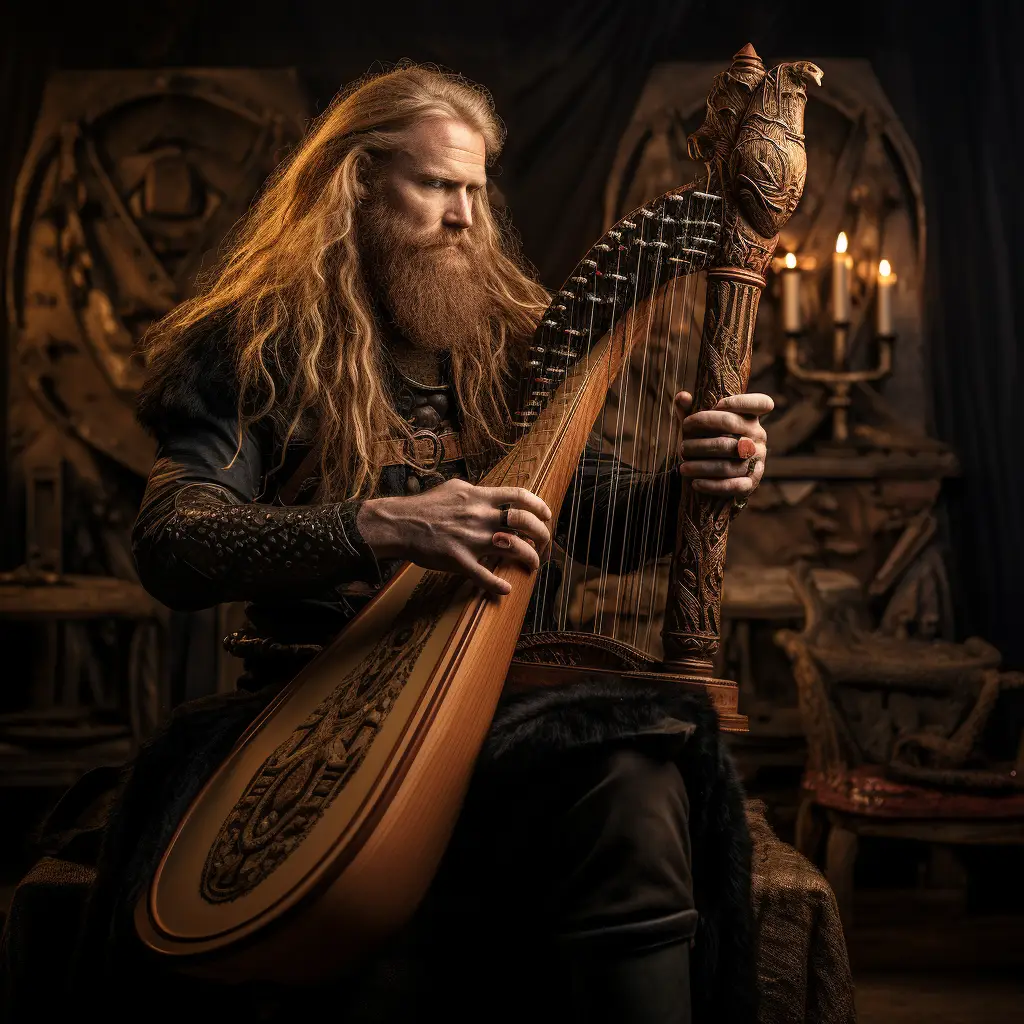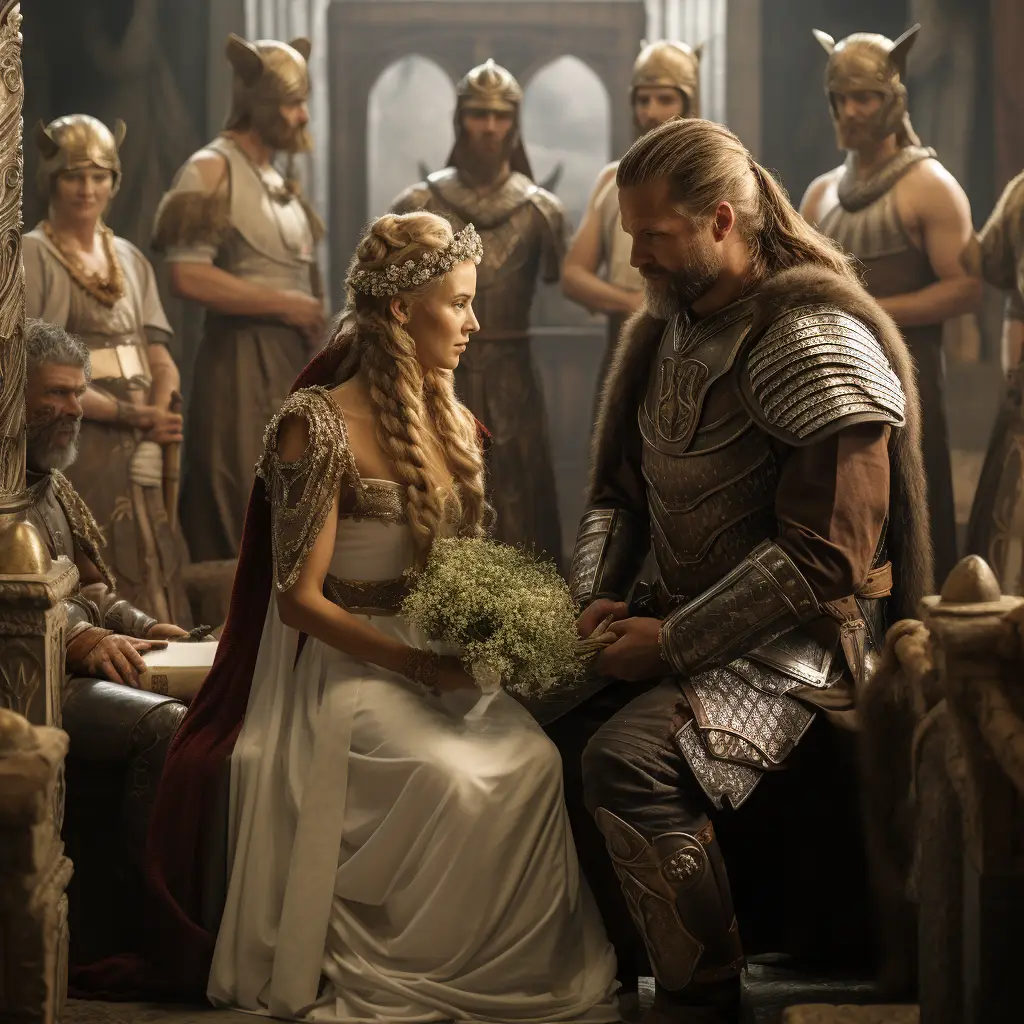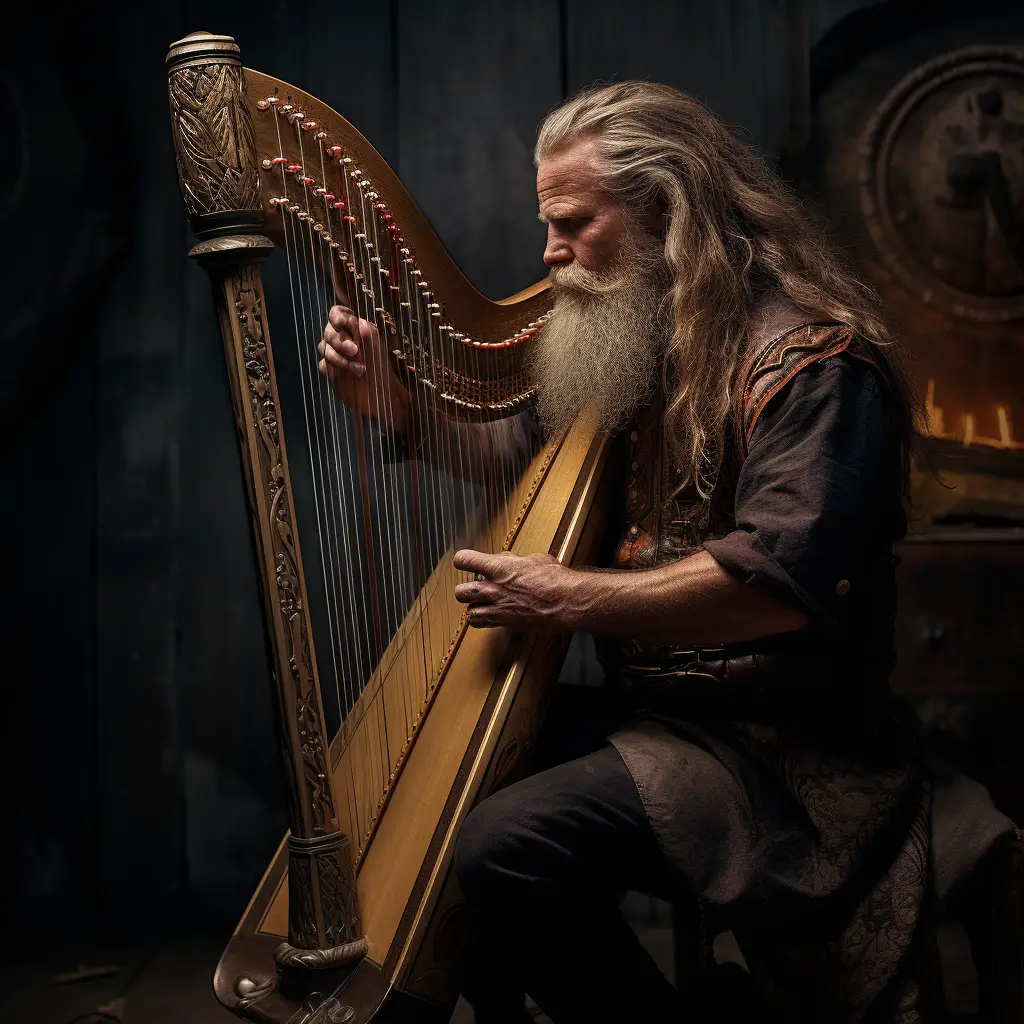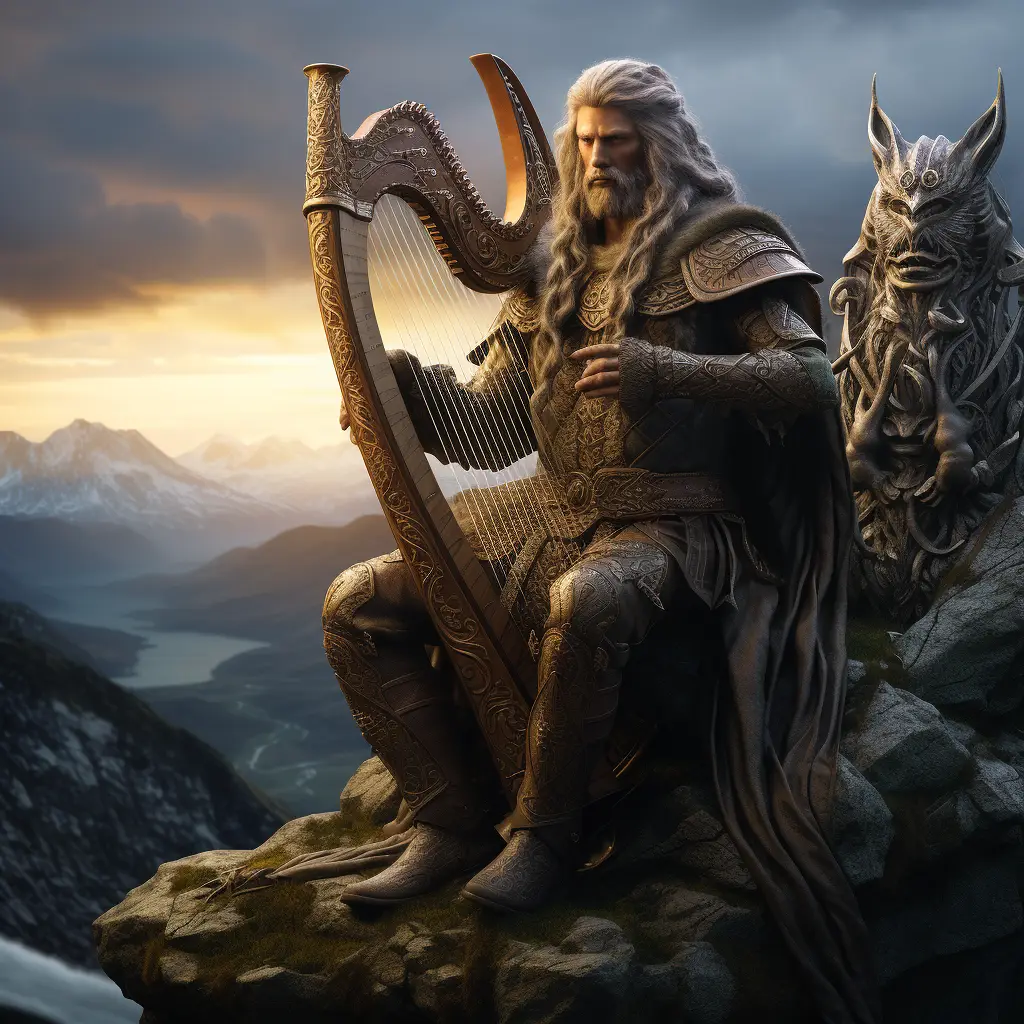Bragi is indeed an interesting figure in Norse mythology. He is considered the god of poetry and eloquence in the Aesir pantheon. Bragi is often depicted as wise, eloquent, and a source of inspiration for poets and skalds (Norse poets). According to the myths, Bragi is the son of Odin, the chief of the Aesir gods, and his wife, the goddess Frigg.
One of the notable stories involving Bragi is his marriage to the goddess Iðunn, who is associated with youth and rejuvenation. Their union is symbolic, emphasizing the connection between poetic inspiration and the eternal renewal of life.
The story goes that Loki, the trickster god, plays a significant role in an incident involving Iðunn. In one version of the tale, Loki tricks Iðunn into leaving Asgard, and then the giant Thjazi kidnaps her. This event leads to a decline in the gods’ powers and vitality. In response, the gods pressure Loki to rescue Iðunn. Loki, in the form of a falcon, retrieves Iðunn and her apples from Thjazi’s fortress.
After this incident, the gods recognize the importance of Iðunn and her apples, and Bragi’s marriage to Iðunn symbolizes the connection between the eternal renewal of life and the inspiration associated with poetry and eloquence.
Bragi is not as widely known as some other Norse gods, but his role in creativity and the art of poetry is significant in Norse mythology.
Snorri Sturluson, a 13th-century Icelandic historian, politician, and author, played a crucial role in preserving and codifying Norse mythology and legends. He is best known for his work “Prose Edda,” which serves as a key source of information about Norse mythology, including details about gods like Bragi.
In the “Prose Edda,” Snorri provides a significant amount of information about Bragi, portraying him as the god of poetry and eloquence. Snorri’s work not only presents mythological narratives but also includes discussions on poetic techniques and forms. Bragi is often depicted as a wise and eloquent figure, embodying the qualities associated with poetry and inspiration.
The details about Bragi specifically during Ragnarök are not as extensively detailed in the surviving Norse myths. However, some general aspects of the end-time events involve the death of numerous gods, the destruction of the world, and the subsequent rebirth.
Given Bragi’s association with poetry and eloquence, it’s intriguing to consider how these qualities might be symbolically connected to the cycles of creation and destruction in the context of Ragnarok. While specifics may not be explicitly outlined in the surviving mythological sources, the theme of renewal and regeneration is a common thread in Norse cosmology.
Vikings were not known particularly for their music but more so for their stories.



